This article was co-authored by Daniel Barrett, MD. Dr. Daniel Barrett is a Board Certified Plastic Surgeon and the owner of Barrett Plastic Surgery based in Beverly Hills, California. With over six years of plastic surgery experience, Dr. Barrett specializes in aesthetic and reconstructive surgery of the face, nose and body. He has developed detailed scar management protocols and closure techniques to reduce the appearance of scars for his patients. Dr. Barrett obtained a BS from James Madison University and an MD along with an MS in Physiology and and an MHA (Masters of Health Administration) from the Medical College of Virginia in Richmond.
There are 26 references cited in this article, which can be found at the bottom of the page.
wikiHow marks an article as reader-approved once it receives enough positive feedback. This article received 11 testimonials and 100% of readers who voted found it helpful, earning it our reader-approved status.
This article has been viewed 241,798 times.
Liposuction, which is sometimes called body contouring, is one of the most popular cosmetic surgery procedures in the world.[1] This procedure involves a plastic surgeon removing excess body fat through suction by means of special surgical equipment. Some common areas for liposuction include the hips, buttocks, thighs, arms, abdomen, and breasts. If you have had or are contemplating liposuction, it’s good to know that recovery can be painful and take a while, but by giving yourself the chance to heal properly, you can enjoy the results of this procedure.[2]
Steps
Recuperating After Surgery
-
1Consult your doctor for post-op instructions. Liposuction is an invasive type of surgery and can have many complications. It’s important to pay attention to your doctor’s post-op instructions and ask any questions you may have. This can help ensure that you heal properly and minimize your risk of complications.[3]
- You may want to ask your doctor questions about recovery at your last appointment before your surgery so that you understand everything.
- Make sure that whoever accompanies you to the surgery also pays attention to the doctor’s instruction in case you are too weary from the surgery or anesthetic to pay close attention.
-
2Schedule sufficient rest time. Whether you have your surgery in a hospital or as an outpatient, you will require at least a few days of rest. Talk to your doctor about how much time you'll need for your recovery.[4]
- The recovery period is directly related to the size of the surgical area and amount of fat your doctor removed. If you had a larger area treated, you may need more time to recover.[5]
- Prepare your home and bedroom before you leave for your surgery. A comfortable environment, including a cozy mattress, pillows, and bedding can help you rest and heal more effectively.[6]
Advertisement -
3Wear compression garments. Following the surgery, your doctor will apply bandages and possibly also compression garments. Wearing compression bandages and garments can help maintain pressure on the area, stop bleeding, and keep the contours from the surgery.[7]
- Some doctors do not provide compression garments. You will need to purchase these either before or immediately after your surgery. You can find compression bandages and garments at pharmacies and medical supply stores.
- Make sure you carefully follow your surgeon's instructions for wearing your compression garments. These will help reduce swelling in the area, which can help promote healing.[8]
- You will probably want to purchase compression garments designed specifically for the area of your body on which you had surgery. For example, if you had liposuction on your thighs, you would want two compression garments to fit around each thigh area.
- You may need to wear your post-op bandages for two weeks, while most people wear the compression garments for a few weeks.[9]
-
4Take antibiotics to prevent infection. Your doctor may prescribe antibiotics following your surgery to reduce the risk of infection. It’s important to take the entire course of antibiotics prescribed, to reduce the risk of infection.[10]
- Recent studies have shown that antibiotics may not be necessary after liposuction, so discuss this with your doctor. You may have a condition such as herpes that requires you to take medication to prevent infections or outbreaks.[11]
-
5Manage pain and swelling with medication. You may have some pain, numbness, and swelling after the surgery. You can ease the pain and swelling with over the counter painkillers or a prescription painkiller.[12]
- It’s normal to feel numbness and tingling, as well as pain for a few weeks post-op. You may also have swelling and bruising during this time.
- It takes most people 1-2 weeks to start feeling better after surgery. You may need to take painkillers for this amount of time or longer.[13]
- Take over the counter pain relievers such as ibuprofen or acetaminophen. Ibuprofen may also help alleviate some of the swelling associated with the surgery.[14]
- Your doctor may prescribe a pain medication if over the counter pain relief doesn’t work for you.[15]
- You can get over-the-counter painkillers and prescription medication at pharmacies.
-
6Walk as soon as possible. It’s important to start moving at a gentle pace as soon as you are able.[16] Walking can help prevent blood clots from forming in your legs, which can be fatal. Gentle movement may also help you heal more quickly as well.[17]
- Although it is recommended to walk or do gentle movement as soon as possible, you may only return to more strenuous activity one month after surgery.[18]
-
7Care for your incision. Your surgical incision may have some stitching. Keep your incision covered according to your doctor's instructions and follow their instructions for changing the bandages.[19]
- Your doctor may insert a drainage tube to help fluid drain from the wound.
- You may shower after 48 hours, but should avoid soaking in a tub until your stitches are removed.[20] Put on clean bandages and reapply pressure garments when you are done showering.
-
8Remove your stitches. Your body may be able to absorb some kinds of stitches, but others may require visiting your doctor for removal. Have your stitches removed at the time suggested by your doctor.[21]
- Your doctor will let you know what kind of stitches when he gives you the post-op instructions.
- If you have dissolvable stitches, you won't need to have them taken out. They will go away on their own.[22]
-
9Watch for signs of complications. The surgery comes with inherent risks, so pay attention to your body for the signs of complications, such as infection. This can help minimize your risk of developing serious complications, which includes death. See your doctor immediately if you experience:[23]
- Increased swelling, bruising, or redness.
- Severe or increased pain.
- Headache, rash, nausea, or vomiting.
- Fever (temperature above 100.4 Fahrenheit).
- Discharge from the incision that is yellow or green or that has a foul odor.
- Bleeding that is hard to stop or control.
- Loss of feeling or movement.
-
10Be aware of when you'll see results. You may not see results immediately because of swelling. It may also take a few weeks for the remaining fat to settle into position, and you should expect some contour irregularities during this time. However, you should be able to see your full results within 6 months of your surgery.[24]
- Liposuction may not last forever, especially if you gain weight.
- You may be disappointed if your results were not as dramatic as you expected.
Maintaining Your Weight After Surgery
-
1Control your weight. Liposuction removes fat cells permanently, but if you gain weight, it may alter you results or the fat may return to the site at which you had surgery. Maintain your weight to help your surgery result keep the appearance you desire.[25]
- It’s best to keep a steady weight. While it might not affect you significantly to gain or lose a pound or two, gaining larger amounts may significantly alter your results.
- Staying active and keeping a healthy diet can help you maintain your weight.
-
2Eat healthy, regular meals. Eating healthy, balanced, and regular meals can help maintain your weight. Focus on following a healthy, high-protein diet that's low in carbohydrates and sugar. Your body needs protein to use as building blocks to heal after surgery.[26]
- Stick to a diet of about 1,800-2,200 nutrient-rich calories a day, depending on how active you are.[27]
- You will get proper nutrition if you incorporate foods from the five food groups every day. The five food groups are: fruits, vegetables, grains, proteins, and dairy.[28]
- You need 1-1.5 cups of fruit per day. You can get this from eating whole fruits such as raspberries, blueberries, or strawberries, or from drinking 100% fruit juice.[29] Make sure to vary the fruits you choose so that you get a range of nutrients and don’t process them in any way. For example, eating a cup of pure berries is much cleaner than eating berries on top of a cake.
- You need 2.5-3 cups of vegetables per day. You can get this from eating whole vegetables such as broccoli, carrots, or peppers, or from drinking 100% vegetable juice.[30] Make sure to vary the vegetables you choose so that you get a range of nutrients.
- Fruits and vegetables are an excellent source of fiber. Fiber will also help you to maintain your weight.[31]
- You need between 5-8 ounces of grains per day, of which ½ should be whole grains. You can get grains and whole grains from foods such as brown rice, whole wheat pasta or bread, oatmeal, or cereal.[32] Grains will provide you with vital Vitamin B, which can help aid slowed digestion.[33]
- You need 5-6.5 ounces of protein per day. You can get protein from lean meats including beef, pork, or poultry; cooked beans; eggs; peanut butter; or nuts and seeds.[34] These will also help you to build and maintain muscle.[35]
- You need 2-3 cups, or 12 oz., of dairy per day.[36] You can get dairy from cheese, yogurt, milk, soymilk, or even ice cream.[37]
- Avoid excessive amounts of sodium in your diet, which is prevalent in mass-processed foods. Your sense of taste decreases as you age, and you may want to salt your food. Try using alternative seasonings such as garlic or herbs to help you avoid excess sodium and gaining water weight.[38]
-
3Avoid unhealthy foods. If you’re trying to lose weight, it’s a good idea to avoid unhealthy or junk foods, many of which are loaded with fat and calories. Steer clear of the snack food aisles in the grocery store when you go shopping[39] Potato chips, nachos, pizza, burgers, cake, and ice cream will not help you lose weight.
- Stay away from starchy, refined carbs such as bread, crackers, pasta, rice, cereal, and baked goods. Eliminating these foods can also help you maintain your weight.
- Look out for hidden sugar in your food choices, which can make you put on weight.
-
4Participate in cardiovascular exercise. Doing low-impact, moderate intensity cardiovascular exercise can help you maintain your fitness and may also help you lose weight. Discuss your plan to do cardio training with your doctor and certified fitness professional before you start.
- You should do at least 30 minutes of moderate exercise all or most days of the week.[40]
- If you are just beginning or need to do a lower impact activity, walking and swimming are excellent options.[41]
- You can do any type of cardio training to help you lose weight. Beyond walking and swimming, consider running, rowing, biking, or using an elliptical machine.[42]
-
5Perform strength-training exercises. In addition to cardiovascular exercise, strength training can help you maintain your weight and liposuction results.[43]
- Before you begin any strength training program, consult with your doctor and maybe even with a certified trainer, who will create the best plan for your abilities and needs.
- Try a yoga or Pilates class either in a studio or online. These lower-impact activities can help strengthen and stretch your muscles while helping you to keep your weight in check.[44]
Expert Q&A
Did you know you can get expert answers for this article?
Unlock expert answers by supporting wikiHow
-
QuestionHow long does it take to recover from liposuction?
 JoAnna Nguyen, MDDr. Joanna Nguyen is a Board-Certified Plastic and Reconstructive Surgeon based in Los Angeles, California. Dr. Nguyen holds dual degrees in Psychology and Biology with a Specialization in Neuroscience from Boston University and completed her medical training at the University of Miami Miller School of Medicine. She then went on to complete comprehensive training in plastic surgery at the University of Southern California. Dr. Nguyen is a practicing plastic surgeon in Los Angeles, California and specializes in eyelid surgery, labiaplasty and breast augmentation. She is a diplomat of the American Board of Plastic Surgery.
JoAnna Nguyen, MDDr. Joanna Nguyen is a Board-Certified Plastic and Reconstructive Surgeon based in Los Angeles, California. Dr. Nguyen holds dual degrees in Psychology and Biology with a Specialization in Neuroscience from Boston University and completed her medical training at the University of Miami Miller School of Medicine. She then went on to complete comprehensive training in plastic surgery at the University of Southern California. Dr. Nguyen is a practicing plastic surgeon in Los Angeles, California and specializes in eyelid surgery, labiaplasty and breast augmentation. She is a diplomat of the American Board of Plastic Surgery.
Board Certified Plastic Surgeon & Reconstructive Surgeon
-
QuestionHow can I speed up my recovery after liposuction?
 Daniel Barrett, MDDr. Daniel Barrett is a Board Certified Plastic Surgeon and the owner of Barrett Plastic Surgery based in Beverly Hills, California. With over six years of plastic surgery experience, Dr. Barrett specializes in aesthetic and reconstructive surgery of the face, nose and body. He has developed detailed scar management protocols and closure techniques to reduce the appearance of scars for his patients. Dr. Barrett obtained a BS from James Madison University and an MD along with an MS in Physiology and and an MHA (Masters of Health Administration) from the Medical College of Virginia in Richmond.
Daniel Barrett, MDDr. Daniel Barrett is a Board Certified Plastic Surgeon and the owner of Barrett Plastic Surgery based in Beverly Hills, California. With over six years of plastic surgery experience, Dr. Barrett specializes in aesthetic and reconstructive surgery of the face, nose and body. He has developed detailed scar management protocols and closure techniques to reduce the appearance of scars for his patients. Dr. Barrett obtained a BS from James Madison University and an MD along with an MS in Physiology and and an MHA (Masters of Health Administration) from the Medical College of Virginia in Richmond.
Board Certified Plastic Surgeon Getting plenty of rest is one of the best ways to help you heal. You can also go on walks to improve blood flow and help the healing process. Besides that, ask your doctor if you should take any medication to help reduce swelling. For my patients, I typically recommend natural pain relievers like arnica, CBD, and fish oil.
Getting plenty of rest is one of the best ways to help you heal. You can also go on walks to improve blood flow and help the healing process. Besides that, ask your doctor if you should take any medication to help reduce swelling. For my patients, I typically recommend natural pain relievers like arnica, CBD, and fish oil. -
QuestionWhat's the fastest way to recover from liposuction?
 JoAnna Nguyen, MDDr. Joanna Nguyen is a Board-Certified Plastic and Reconstructive Surgeon based in Los Angeles, California. Dr. Nguyen holds dual degrees in Psychology and Biology with a Specialization in Neuroscience from Boston University and completed her medical training at the University of Miami Miller School of Medicine. She then went on to complete comprehensive training in plastic surgery at the University of Southern California. Dr. Nguyen is a practicing plastic surgeon in Los Angeles, California and specializes in eyelid surgery, labiaplasty and breast augmentation. She is a diplomat of the American Board of Plastic Surgery.
JoAnna Nguyen, MDDr. Joanna Nguyen is a Board-Certified Plastic and Reconstructive Surgeon based in Los Angeles, California. Dr. Nguyen holds dual degrees in Psychology and Biology with a Specialization in Neuroscience from Boston University and completed her medical training at the University of Miami Miller School of Medicine. She then went on to complete comprehensive training in plastic surgery at the University of Southern California. Dr. Nguyen is a practicing plastic surgeon in Los Angeles, California and specializes in eyelid surgery, labiaplasty and breast augmentation. She is a diplomat of the American Board of Plastic Surgery.
Board Certified Plastic Surgeon & Reconstructive Surgeon Before and after your procedure, eat a healthy diet that's high in protein and low in carbohydrates and sugar. That way, your body will be getting the building blocks it needs to heal. Also, carefully follow your doctor's post-op instructions, like wearing compression garments properly and for the directed number of hours you're supposed to wear them.
Before and after your procedure, eat a healthy diet that's high in protein and low in carbohydrates and sugar. That way, your body will be getting the building blocks it needs to heal. Also, carefully follow your doctor's post-op instructions, like wearing compression garments properly and for the directed number of hours you're supposed to wear them.
Warnings
- Be aware of the risks of liposuction before undergoing the procedure. All surgeries pose risks, and liposuction is no different.⧼thumbs_response⧽
References
- ↑ https://www.plasticsurgery.org/documents/News/Statistics/2020/plastic-surgery-statistics-full-report-2020.pdf
- ↑ https://www.nlm.nih.gov/medlineplus/ency/article/002985.htm
- ↑ https://www.nlm.nih.gov/medlineplus/ency/article/002985.htm
- ↑ Daniel Barrett, MD. Board Certified Plastic Surgeon. Expert Interview. 23 July 2020.
- ↑ https://www.nlm.nih.gov/medlineplus/ency/article/002985.htm
- ↑ https://www.med.umich.edu/1libr/Surgery/PlasticSurgery/Cosmetic/Liposuction-postop.pdf
- ↑ https://pubmed.ncbi.nlm.nih.gov/31930941/
- ↑ JoAnna Nguyen, MD. Board Certified Plastic Surgeon & Reconstructive Surgeon. Expert Interview. 29 July 2020.
- ↑ https://www.plasticsurgery.org/cosmetic-procedures/liposuction/recovery
- ↑ https://journals.sagepub.com/doi/abs/10.1177/074880689601300105?journalCode=acsa
- ↑ http://www.ncbi.nlm.nih.gov/pubmed/16042931
- ↑ https://www.nhs.uk/conditions/cosmetic-procedures/liposuction/
- ↑ https://www.plasticsurgery.org/news/blog/what-you-need-to-know-about-your-liposuction-recovery
- ↑ https://www.drugs.com/cg/liposuction-discharge-care.html
- ↑ https://www.nlm.nih.gov/medlineplus/ency/article/002985.htm
- ↑ Daniel Barrett, MD. Board Certified Plastic Surgeon. Expert Interview. 23 July 2020.
- ↑ https://www.nlm.nih.gov/medlineplus/ency/article/002985.htm
- ↑ https://www.med.umich.edu/1libr/Surgery/PlasticSurgery/Cosmetic/Liposuction-postop.pdf
- ↑ http://www.med.umich.edu/1libr/Surgery/PlasticSurgery/Cosmetic/Liposuction-postop.pdf
- ↑ Daniel Barrett, MD. Board Certified Plastic Surgeon. Expert Interview. 23 July 2020.
- ↑ http://www.nhs.uk/chq/Pages/2413.aspx
- ↑ http://www.nhs.uk/chq/Pages/2413.aspx
- ↑ http://www.med.umich.edu/1libr/Surgery/PlasticSurgery/Cosmetic/Liposuction-postop.pdf
- ↑ http://www.med.umich.edu/1libr/Surgery/PlasticSurgery/Cosmetic/Liposuction-postop.pdf
- ↑ Daniel Barrett, MD. Board Certified Plastic Surgeon. Expert Interview. 23 July 2020.
- ↑ JoAnna Nguyen, MD. Board Certified Plastic Surgeon & Reconstructive Surgeon. Expert Interview. 29 July 2020.
- ↑ http://www.eatright.org/resource/food/nutrition/dietary-guidelines-and-myplate/healthy-eating-for-women
- ↑ https://www.choosemyplate.gov/
- ↑ https://www.choosemyplate.gov/eathealthy/fruits
- ↑ https://www.choosemyplate.gov/eathealthy/vegetables
- ↑ http://familydoctor.org/familydoctor/en/seniors/staying-healthy/good-health-habits-at-age-60-and-beyond.html
- ↑ https://www.choosemyplate.gov/eathealthy/grains
- ↑ https://www.helpguide.org/articles/alzheimers-dementia-aging/staying-healthy-as-you-age.htm
- ↑ https://www.choosemyplate.gov/eathealthy/protein-foods
- ↑ https://www.helpguide.org/articles/alzheimers-dementia-aging/staying-healthy-as-you-age.htm
- ↑ https://www.choosemyplate.gov/eathealthy/dairy
- ↑ https://www.choosemyplate.gov/eathealthy/dairy
- ↑ https://www.helpguide.org/articles/alzheimers-dementia-aging/staying-healthy-as-you-age.htm
- ↑ https://www.plasticsurgery.org/news/blog/best-foods-to-eat-after-liposuction
- ↑ http://orthoinfo.aaos.org/topic.cfm?topic=a00531
- ↑ http://orthoinfo.aaos.org/topic.cfm?topic=a00531
- ↑ http://orthoinfo.aaos.org/topic.cfm?topic=a00531
- ↑ http://orthoinfo.aaos.org/topic.cfm?topic=a00531
- ↑ http://orthoinfo.aaos.org/topic.cfm?topic=a00531
About This Article
To recover from liposuction, start by getting a few days of rest following the procedure so your body has time to heal. Additionally, wear compression bandages and garments to maintain pressure on the area, which can help stop bleeding, improve circulation, and minimize swelling. You should also start moving as soon as possible, even it it’s a gentle, short walk, to help prevent blood clots from forming. If you're struggling with pain and bruising, try taking an over the counter pain reliever, like aspirin or Tylenol. To learn how to watch for signs of complications after liposuction, keep reading!
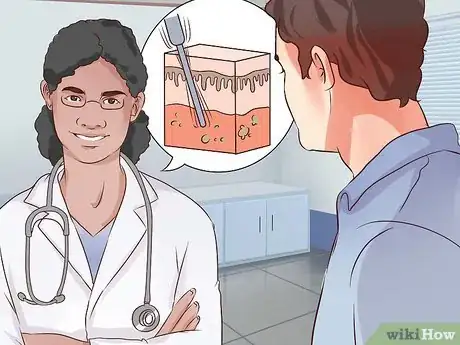
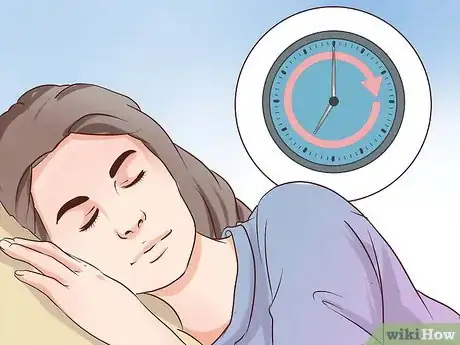

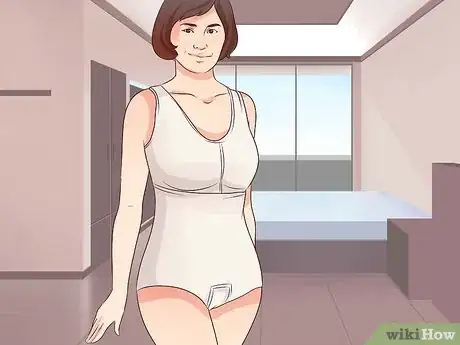

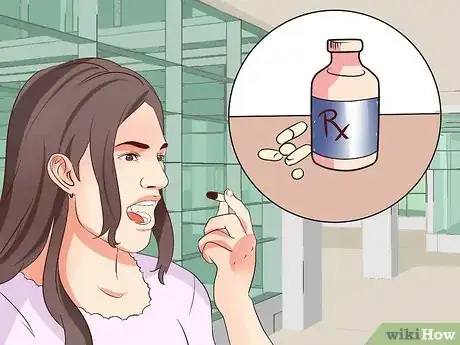
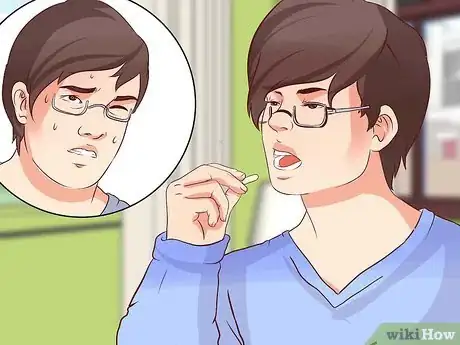
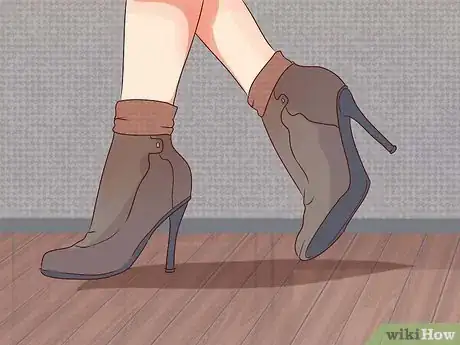
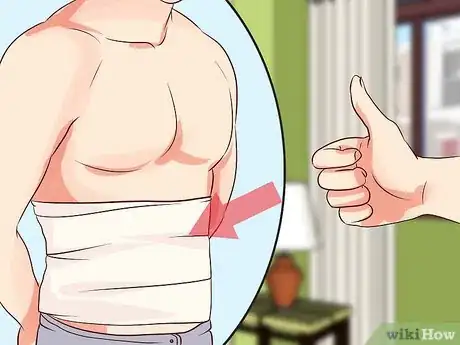
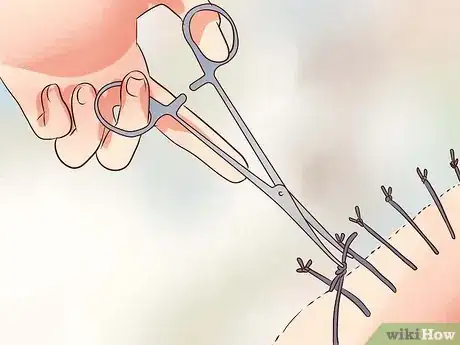
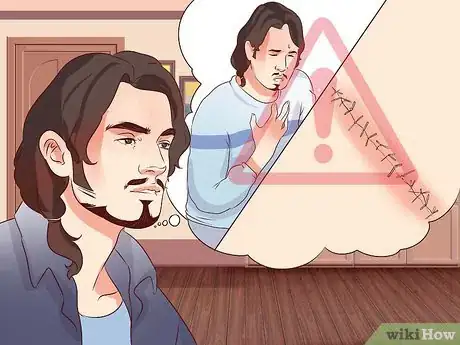
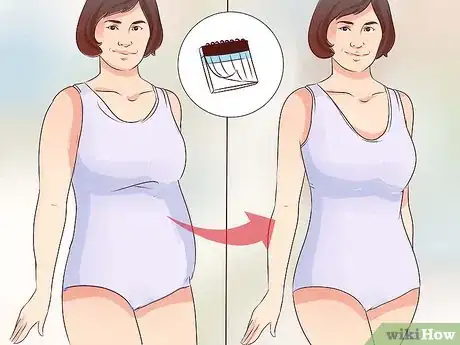
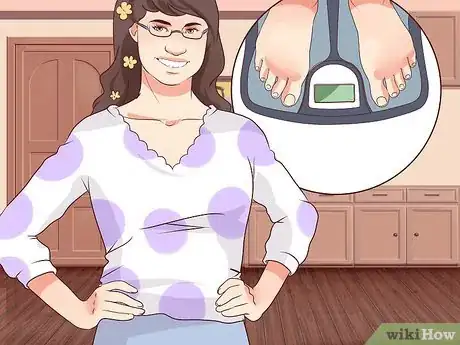

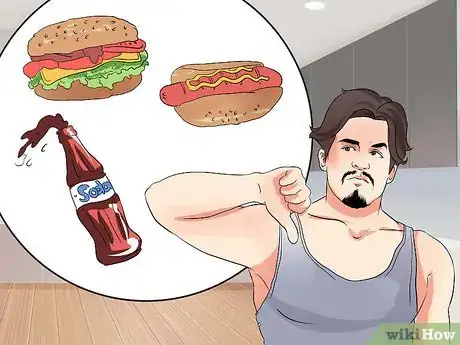
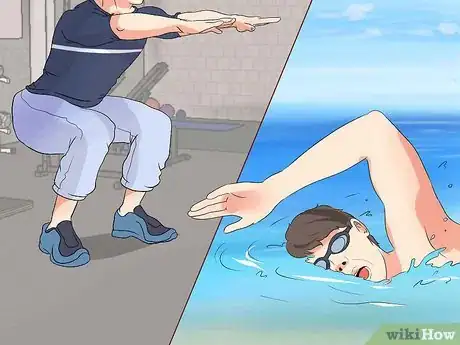

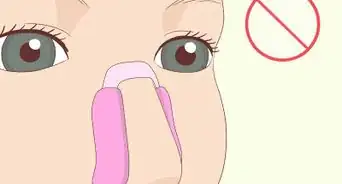
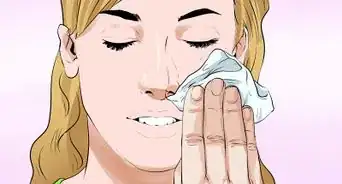
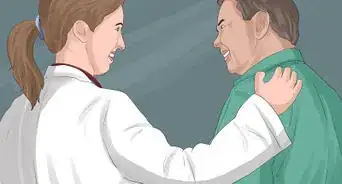
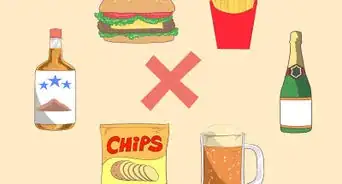










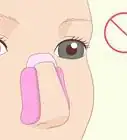
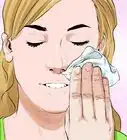

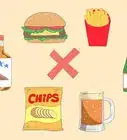



































Medical Disclaimer
The content of this article is not intended to be a substitute for professional medical advice, examination, diagnosis, or treatment. You should always contact your doctor or other qualified healthcare professional before starting, changing, or stopping any kind of health treatment.
Read More...